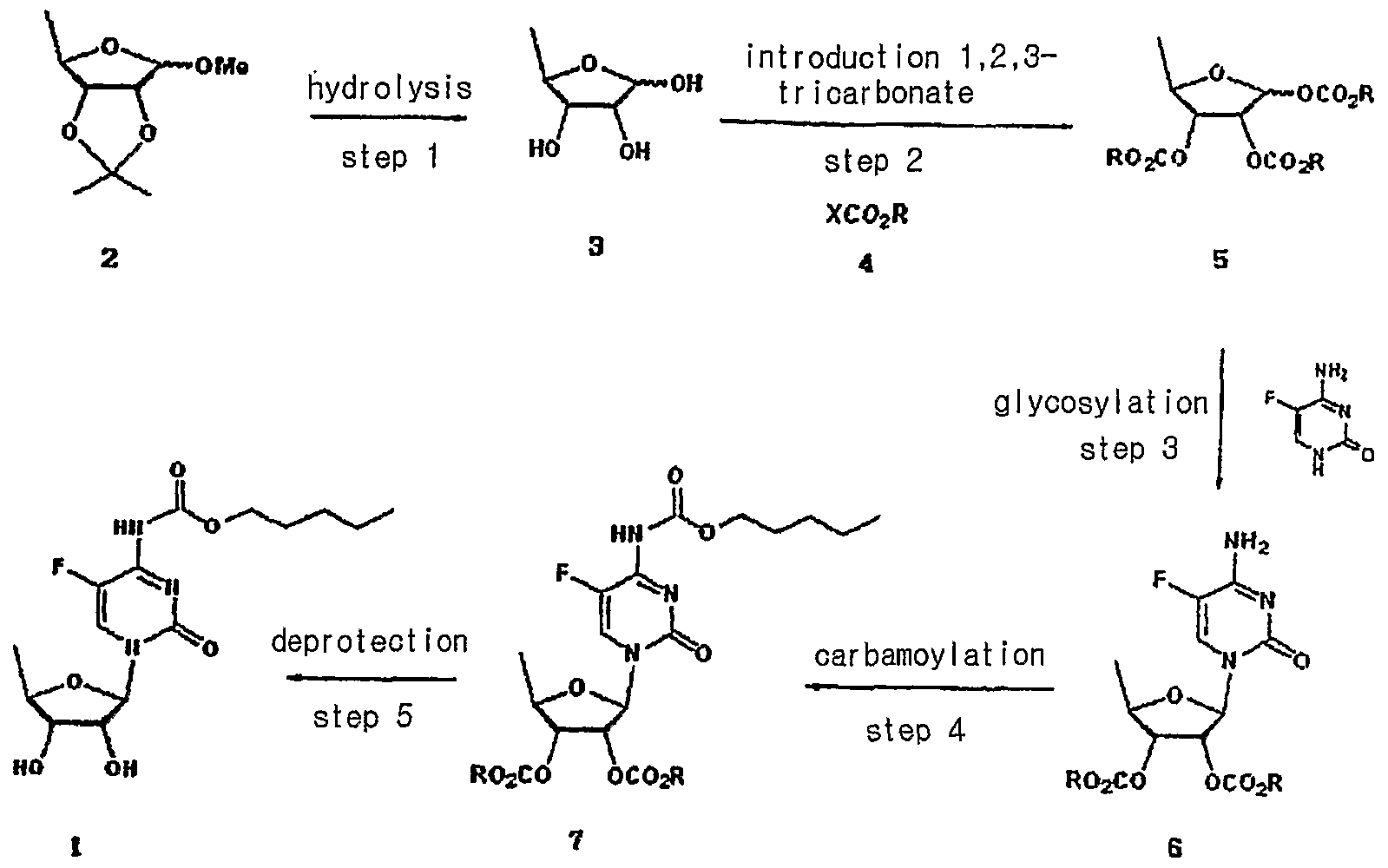
1036712-77-2 cas NO
see also WO 2008079968 BAYER
VEGFR-2 (FLK-1/KDR) Inhibitors
Bcr-Abl Kinase Inhibitors
HGFR (MET; c-Met) Inhibitors
Inhibitors of protein kinases, such as wild-type and mutations of Bcr-Abl, Flk1, c-Met, expected to be useful for the treatment of hyperproliferative and/or angiogenesis disorders such as cancer. A representative compound suppressed Flk-1, c-Met and wild type and T135I mutant Bcr-Abl enzymes with IC50 values below 1 mcM. Compound also inhibited the proliferation of K562 (IC50 = 1.58 nM) and BAF3 cells expressing wild-type and T315I, E255K, M351T and Y253F mutant Brc-Abl enzymes (IC50 = 3.84, 34.1, 503, 811 and 564 nM, respectively).
Example 1HYDROXY METHYL PHENYL PYRAZOLYL UREA (4-{4-[({3-tert-Butyl-1-[3-(hydroxymethyl)phenyl]-1H-pyrazol-5-yl}carbamoyl)amino]-3-fluorophenoxy}-N-methylpyridine-2-carboxamide)
HYDROXY METHYL PHENYL PYRAZOLYL UREAStep 1. Preparation of ethyl 3-(5-amino-3-tert-butyl-1H-pyrazol-1-yl)benzoate
-
Sulfuric acid (concentrated, 15.7 mL, 295.7 mmol) was carefully added drop-wise to cold EtOH (600 mL) with stirring. To this, 3-hydrazinobenzoic acid (45 g, 295.7 mmol) and 4,4-dimethyl-3-oxopentanenitrile (40.7 g, 325.3 mmol) were added and then the mixture was heated at 90°C for 48 h. Most of the solvent was evaporated at reduced pressure, and the residual mixture was diluted with ethyl acetate. The resulting mixture was washed with ice cold 2M NaOH followed by brine, and dried (Na2SO4). The solution was filtered through a bed of silica gel, washing with more ethyl acetate. Evaporation of ethyl acetate and treatment of the residue with dichloromethane/hexanes gave the product as an off-white crystalline solid (61 g, 71%). MS mlz 288.2 (M+H)+; calcd. mass 287. Retention time (LC-MS): 2.99 min. 1H-NMR (DMSO-d6): δ 8.16 (m 1H); 7.88 (m, 2H); 7.60 (t, 1H); 5.40 (s, 1H); 5.32 (s, 2H); 4.36 (q, 2H); 1.34 (t, 3H); 1.21 (s, 9H).
Step 2. Preparation of ethyl 3-{3-tert-butyl-5-[(phenoxycarbonyl)amino]-1H-pyrazol-1-yl}-benzoate
-
To a mixture of ethyl 3-(5-amino-3-tert-butyl-1H-pyrazol-1-yl)benzoate (60 g, 208.8 mmol) and K2CO3 (86.6 g, 626.4 mmol) in THF (1400 mL) was added phenyl chloroformate (98.1 g, 626.4 mmol). The reaction was stirred at room temperature overnight. The solid was removed by filtration and most of the solvent was evaporated under reduced pressure. The residual mixture was dissolved in EtOAc and washed with brine, then water. The organic layer was then dried and concentrated. The crude product was purified by recrystallization from CH2Cl2/hexanes to give the desired product as a white powder (78.5 g, 92%). MS m/z 408.1 (M+H)+; calcd. mass 407. Retention time (LC-MS): 3.92 min. 1H-NMR (DMSO-d6): δ 10.19 (s, broad, 1H); 8.11 (m 1H); 7.97 (d, J = 7.6 Hz, 1H); 7.86 (m, 1H); 7.71 (t, 1H); 7.38 (m, 2H); 7.24 (m, 1H); 7.08 (m, 1H); 6.40 (s, 1H); 4.38 (q, 2H); 1.32 (t, 3H); 1.29 (s, 9H).
Step 3. Preparation of ethyl 3-(3-tert-butyl-5-{[(2-fluoro-4-{[2-(methylcarbamoyl)pyridin-4-yl]-oxy}phenyl)carbamoyl]amino}-1H-pyrazol-1-yl)benzoate
-
A solution of ethyl 3-{3-tert-butyl-5-[(phenoxycarbonyl)amino]-1H-pyrazol-1-yl}benzoate (9.36 g, 22.0 mmol), 4-(4-amino-3-fluorophenoxy)-N-methylpyridine-2-carboxamide (5.0 g, 19.1 mmol; prepared as described in Dumas et al., PCT Int. Appl. WO 2004078748 (2004 )) and triethyl amine (3.87 g, 38.3 mmol) in anhydrous THF (100 mL) was stirred at room temperature overnight. The crude product was purified by column chromatography (CH2Cl2 plus 1% to 3% of 2M NH3 in MeOH), followed by recrystallization from EtOAc/hexanes to give the desired product as an off-white crystalline solid (6.32 g, 57%). MS m/z 575.1 (M+H)+; calcd. mass 574. Retention time (LC-MS): 3.75 min.1H-NMR (DMSO-d6): δ 8.97 (m, 1H); 8.89 (m, 1H); 8.80 (m, 1H); 8.52 (d, J = 5.6 Hz, 1H); 8.16 (t, 1H); 8.06 (m, 1H); 7.99 (m, 1H); 7.85 (m, 1H); 7.71 (t, 1H); 7.39 (m, 1H); 7.33 (m, 1H); 7.17 (m, 1H); 7.06 (m, 1H); 6.42 (s, 1H); 4.36 (q, 2H); 2.78 (d, J = 5.2 Hz, 3H); 1.31 (m, 12H).
Step 4. Preparation of (4-{4-[({3-tert-butyl-1-[3-(hydroxymethyl)phenyl]-1H-pyrazol-5-yl}carbamoyl)amino]-3-fluorophenoxy}-N-methylpyridine-2-carboxamide)
-
To a well-stirred cooled solution of 4-(4-{3-[5-tert-butyl-2-(3-ethoxycarbonyl-phenyl)-2H-pyrazol-3-yl]-ureido}-3-fluoro-phenoxy)-pyridine-2-carboxylic acid methylamide (56 mg, 0.1 mmol) in ethanol (10 mL), NaBH4 (50 mg) was added in portions. After 14 h, ice water (10 mL) was carefully added to the reaction mixture. Then, most of the ethanol was evaporated under reduced pressure. The residual mixture was treated with saturated aqueous ammonium chloride solution (10 mL) and extracted three times with dichloromethane (50, 25, and 25 mL). The combined dichloromethane extract was dried (sodium sulfate) and the solvent was evaporated. The crude product was purified by preparative thin layer chromatography on silica gel using 3-5% 2M ammonia in methanol in dichloromethane as the eluent to yield the desired product as a white powder (31 mg, 58%).
For a larger scale synthesis, the following similar procedure was followed: To a solution of ethyl 3-(3-tert-butyl-5-{[(2-fluoro-4-{[2-(methylcarbamoyl)pyridin-4-yl]oxy}phenyl)carbamoyl]-amino}-1H-pyrazol-1-yl)benzoate (11.2 g, 19.5 mmol) in EtOH was added NaBH4 stepwise as a solid. The reaction was then stirred at room temperature overnight, and then quenched by gradual addition of aqueous NH4Cl. The mixture was diluted with EtOAc, washed with aq. NH4Cl, followed by brine. The organic layer was then dried and concentrated. The crude product was then purified by column chromatography on silica gel (CH2Cl2 plus 1 to 5% of 2M NH3 in MeOH), followed by recrystallization from dichloromethane/hexanes to give the desired product as a white crystalline solid (8.0 g, 77%). Mp 160 ºC; after further recrystallization, desired product was obtained with mp 196 ºC. - MS m/z 533.3 (M+H)+; calcd. mass 532. Retention time (LC-MS): 3.13 min.
- 1H-NMR (DMSO-d6): δ 9.02 (s, broad, 1H); 8.87 (s, 1H); 8.81 (m, 1H); 8.52 (d, J= 5.2 Hz, 1H); 8.21 (t, 1H); 7.51 (m, 2H); 7.39 (m, 3H); 7.32 (m, 1H); 7.17 (m, 1H); 7.06 (m, 1H); 6.40 (s, 1H); 5.36 (t, 1H); 4.59 (d, J = 5.6 Hz, 2H); 2.78 (d, J = 4.8 Hz, 3H); 1.27 (s, 9H).
- Elemental Analysis: C 62.92%; H 5.43%; N 15.70%; calcd. C 63.15%; H 5.49%; N 15.78%.





































































